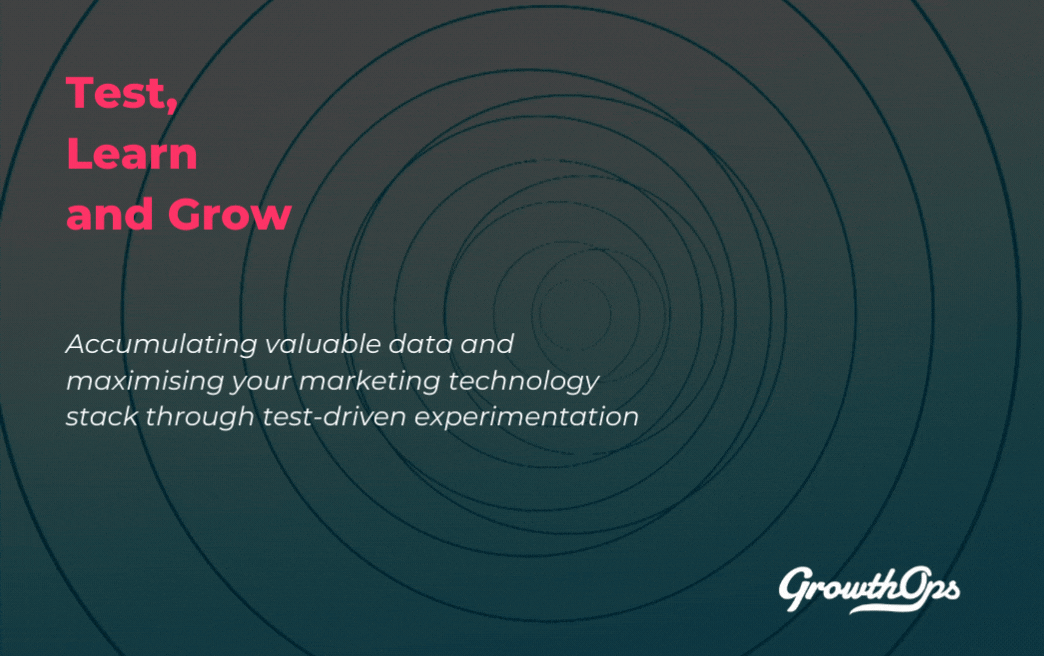One of our guiding principles at GrowthOps is ‘Permission granted’.
“You have the power and the permission. Go outside your comfort zone, nothing stays static, especially you, so step up and run into gaps where you see them. Reach out to anyone at any time and speak the truth, even if it’s sometimes unpopular.”
There is a lot to unpack there, but I find the notion of “running into gaps” particularly interesting and impactful.
I’ve seen some exciting thing happen as a result of people embracing this concept, so I thought I’d share with you my current thinking on the topic. Hopefully, it gives you a few ideas for how this might apply to your organisation (and life).
What is “running into gaps”?
A mindset shift rather than a formal process. A rallying cry to look for, and take on, opportunities that make sense for you, and for the organisation. To bring your particular skillset to bear on a problem that needs solving or an exciting opportunity that you are uniquely equipped for.
What it’s not
It’s not a replacement for other forms of development and innovation. Some people prefer more structure and guidance, conversations with practice leads and contributing to planned projects, for example. And that’s ok. It’s also not an open door policy for team members to spend all their time on whatever projects they feel like to the detriment of their craft or current commitments.
So with that said, why would you actively encourage a culture of gap running? Here are a few thoughts…
Improves opportunity identification
To run into a gap, you need to be able to spot one. For this, a degree of systems thinking is very useful. When people become more practised at looking at situations from multiple perspectives they get much better at spotting challenges, opportunities and problems. This not only has benefits for bigger ‘gaps’ that could represent a project in themselves but will also serve to highlight the smaller ‘cracks’ that can make a big difference to existing initiatives.
Encourages strategic thinking
This might be a bit of my own bias showing here, but getting folk to think strategically about how they may approach solving a ‘gap challenge’ once they have spotted it is a real plus. Assessing the problem it solves, who it helps, who it might cause issues for, the long term implications, how success will be measured, how value could be created, etc, etc. Practising this type of thinking is beneficial to almost any role.
Promotes a growth mindset
In her research on attitudes towards success and failure, Professor Carol Dweck identified the benefits of holding a ‘growth mindset’ with regards to one’s own intelligence and ability to learn. For individuals with a fixed mindset the experience of taking on new challenges and succeeding can help dissipate any limiting beliefs about the ability to grow and develop.
Promotes the right kind of risk-taking
When supported and encouraged, this practice encourages people to take appropriately bounded risks with their thinking and action. Not all projects and initiatives will succeed, but with the right kind of eyes, therein lie the lessons.
Encourages a bias to action
As the name implies, running into gaps requires ‘doing’. You have to make it happen.
Encourages others to gap run
When combined with a culture of mutual support and encouragement, people not only look for gaps they can run into but ones that look right for their teammates as well.
Promotes connection across the organisation
The gap that needs filling might not be in your immediate team or physical location. Those interested in identifying and running into gaps will be well served to reach out and make new connections across the organisation. And the more connections we make, the more serendipitous magic happens!
Fosters future thinking
It really helps to think about not just what gaps need filling now, but which will open up in the not too distant future. Having your whole team thinking about where the organisation is heading can be very powerful.
Helps create powerfully connected skillsets
Leonardo da Vinci’s genius not only allowed him to create things in many fields, but his interest in many fields afforded him a unique perspective, which elevated his creativity in each. I can’t wait for David Epstein’s (author of the fantastic, ’The Sports Gene’) new book on this topic, ‘Range: Why Generalists Triumph in a Specialized World’.
Helps individuals find more elements of autonomy, mastery and purpose in their work
Author Daniel Pink identified these as powerful motivating forces for individuals in his fantastic book, Drive. And organisations that encourage their teams to explore these elements attract and retain more of the best talent. Which of course makes for happier, high performing teams.
A final parting thought. For this to catch on, for people to start running into gaps, they must see that doing so is supported, welcomed and possible. As with any principles and behaviours, an organisation tries to embody, there cannot be a disconnect between the saying and the doing. That just erodes trust and undermines the credibility of future initiatives. So if you like the idea of a gap running culture, think about how you will communicate and support this way of operating.
I’d love to hear about any experiences you’ve had running into gaps.
Written by Phil Cross, Principal, Coaching and Leadership



